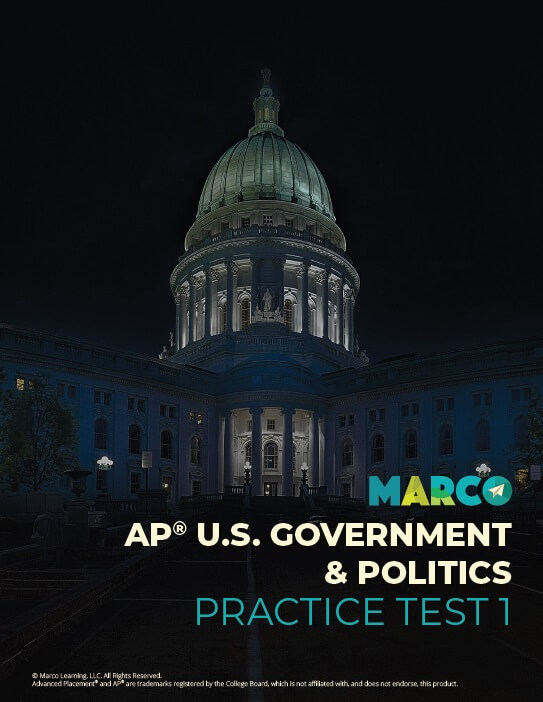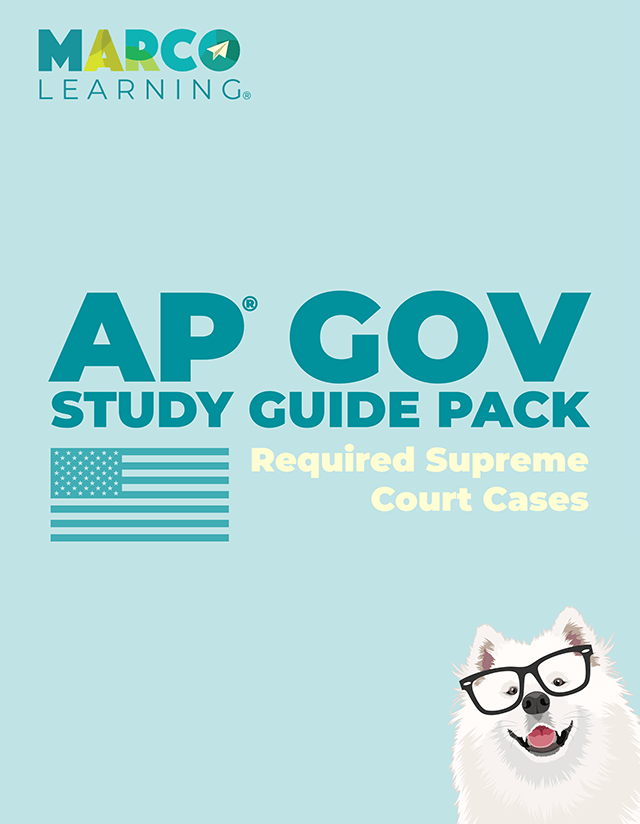


To score well on your AP U.S. Government and Politics Exam, it is important to become familiar with all of the required Supreme Court cases. In the free-response section of your AP® U.S. Government Exam, you will have to answer four essay questions. The third of these questions is a SCOTUS comparison essay, in which you will be required to compare a non-required Supreme Court case with a required Supreme Court case, so get to know each required Supreme Court case as well as possible!
The required Supreme Court cases for the AP U.S. Government and Politics Exam in 2021 are:
Marbury v. Madison (1803)
McCulloch v. Maryland (1819)
Schenck v. the United States (1919)
Brown v. Board of Education (1954)
Engel v. Vitale (1962)
Baker v. Carr (1962)
Gideon v. Wainwright (1963)
Tinker v. Des Moines Independent Community School District (1969)
New York Times Co. v. United States (1971)
Wisconsin v. Yoder (1972)
Roe v. Wade (1973)
Shaw v. Reno (1993)
United States v. Lopez (1995)
McDonald v. Chicago (2010)
Citizens United v. Federal Election Commission (2010)
Shaw v. Reno (1993)
Shaw v. Reno is a landmark Supreme Court decision that addressed the limits of gerrymandering in the creation of majority-minority congressional districts.
Tom Richey delves deeper into the facts of the case in this video:
FACTS OF THE CASE
After the 1990 Census, the state of North Carolina submitted a redistricting map to the Department of Justice that contained one majority-minority black district. Attorney General Janet Reno instructed North Carolina to revise its map to add a second majority-minority district in order to comply with 1982 amendments to the 1965 Voting Rights Act. The 12th district of North Carolina’s new proposal was extremely long and oddly shaped, thinly stretching through various parts of the state to connect areas with large black populations. In 1991, a group of white voters led by Ruth Shaw challenged the proposed redistricting, arguing that the way in which the map was drawn violated the Equal Protection Clause of the 14th Amendment and amounted to legislative gerrymandering.
THE DECISION
In a 5-4 opinion, the Supreme Court ruled that the shape of the proposed district in North Carolina was bizarre enough that it could not be explained as anything other than an attempt to separate voters along racial lines. In the majority decision, Justice Sandra Day O’Connor noted that while redistricting may take race into account and must not violate the Voting Rights Act, race cannot be the primary consideration when a jurisdiction redraws legislative district lines.
IMPACT
The decision in Shaw v. Reno led to nationwide changes after the 2000 Census. The case established that any legislative redistricting must be strictly scrutinized and that any laws related to racially motivated redistricting must be held to narrow standards and compelling government interests.
SUBSEQUENT CASE
Miller v. Johnson (1995)— declared that a gerrymandered district in Georgia (very similar to the one in North Carolina) was unconstitutional because it was predominantly race based.
KEY TERMS
Equal Protection Clause The clause within the 14th Amendment that guarantees all citizens equal protection under the law.
Gerrymandering The practice of manipulating the boundaries of legislative districts to provide an advantage to one political party or group.
Majority-Minority Area A jurisdiction in which one or more racial minorities constitute the majority of that area’s population.
 Help
Help